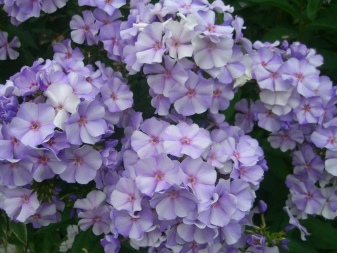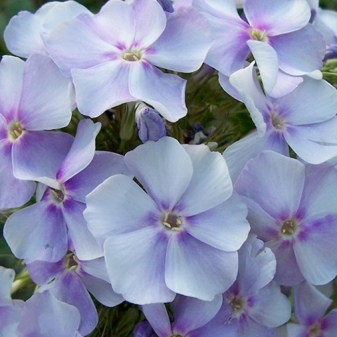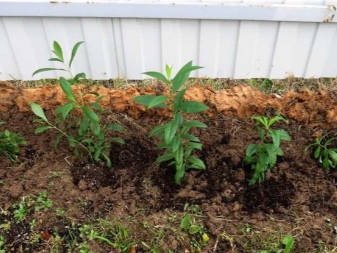Phlox paniculata "New": description and secrets of cultivation

Many flowers have beautiful legends of their appearance on earth. Phlox is no exception. According to legend, Odysseus, leaving the Kingdom of the Dead, left his torch, and phlox grew on this place. Currently, there are many varieties of these amazingly beautiful plants, and breeding work on the breeding of new species has never stopped. But the old "well-deserved" varieties "with the quality mark" have never been forgotten by flower growers and landscape design specialists.


Description
Phlox are herbaceous, abundantly flowering plants of the cyanide family. It is among paniculate phloxes that there are most of the most beautiful varieties. Panicled phlox "Novinka" is one of them. This is an unpretentious frost-resistant plant that is resistant to diseases. The bush is compact, 60 -75 cm high, grows quickly. Stems are erect, strong, leafy with pointed leaves. Long-lasting flowering begins in early or mid-August.
Inflorescences are dense, rounded with a diameter of 17 -18 cm. The flowers are wavy white with blue-blue tints, about 4 cm in size, in the center with purple dots. Unbroken buds are bright blue.


Reproduction methods
The most common way is to divide the bush. You can divide the bush in spring and autumn. The survival rate is good, a new bush, with proper agricultural technology, will bloom in the current season. Of course, in the first year it will not be a powerful bush with luxurious flowers, but it will look quite dignified and will serve as a decoration for any garden.
In addition to dividing the bush, phloxes reproduce by cuttings. To do this, the cuttings are placed in the ground and covered with a transparent cap, periodically watering and airing the "greenhouse".
Seed propagation is possible, but retains varietal characteristics poorly.



Site selection
The best planting place for phlox "Novinka" is an area with diffused illumination without direct sunlight, under which plant leaves can get burned. Phloxes love fertile, organic-rich, moist soil, but without stagnant water. Phlox should not be planted in drafts, under trees, on northern slopes. The site should be spacious enough, since the intensity of flowering decreases in thickened plantings, decorative qualities are lost.


Planting and care rules
Before planting, the soil is dug onto a shovel bayonet (approximately 35 cm deep). If the soil is sandy, then it must be enriched with humus. Acidic soils should be deacidified by autumn liming; on clayey soils, drainage will be needed. Garden soil is poured into the planting pit, complex mineral fertilizers are added, and abundantly spilled with water. The roots are buried 4-5 cm in the soil, sprinkled with garden soil, compacted and watered.
It is not burdensome to take care of phlox, but it should be remembered that growing even the most unpretentious plant requires attention. Flowers need regular watering, mineral fertilizing, wood ash can be added. Shallow loosening is periodically necessary, preferably after watering. In autumn, the ground part of the stems is cut to 2/3 of the height.
Shelter for the winter is not required, since the Novinka variety is a winter-hardy plant.


Growing secrets
There are general tips for growing phlox:
- when deciding to grow these flowers, it is necessary to provide for the possibility of abundant watering of the plantings, otherwise the lack of moisture will become the main problem for the successful development of plants;
- another indispensable condition is the introduction of a sufficient amount of organic matter into the soil;
- the soil should be prepared long before planting: it is necessary to prepare the soil for the spring planting in the fall, and for the autumn planting from the summer.
Phlox is one of the most widespread crops in floriculture. Variety "Novinka" is ideal for planting on the lawn as an independent plant, and in combination with other flowers.
Phlox "Novelty" in cut form retains freshness for a long time, is often used in the preparation of bouquets and various flower decorations.


For the features of this variety of phlox, see below.







































































































The comment was sent successfully.